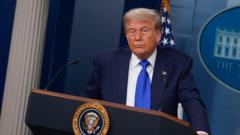In 1979, President Jimmy Carter installed solar panels on the White House, symbolizing a push for energy independence. After removal in 1986, these panels went on to serve various locations, leaving a lasting impact on renewable energy.
The Solar Legacy of Jimmy Carter: From the White House to the World

The Solar Legacy of Jimmy Carter: From the White House to the World
How the solar panels installed by President Carter transformed energy discussions and found new purpose after their removal.
In 1979, President Jimmy Carter made a groundbreaking move by installing 32 solar panels on the roof of the White House, setting an ambitious precedent in energy policy amid the 1970s oil crisis. The decision came at a time when energy independence was essential, arising from an oil embargo that rocked the American economy and provoked concerns about reliance on foreign oil. During the unveiling event, Carter remarked, “No one can ever embargo the sun or interrupt its delivery to us,” showcasing his forward-thinking vision.
However, the solar panels were removed in 1986 during Ronald Reagan’s presidency, never to be reinstalled. Yet, their story did not end there. Acquired at a minimal cost by a small college in Maine, they continued to generate renewable energy for years. As time passed, these panels made their way to various places across America and even found their way as far as China, illustrating the lasting influence of Carter’s initiative.
Reflecting on Carter's legacy, experts emphasize that he was ahead of his time. Ernest Moniz, who served as energy secretary under Barack Obama, noted the significance of Carter’s foresight, especially since it took a further decade for Congress to hold its first hearing on climate change issues. The story of Carter’s solar panels serves as a reminder of a pivotal moment in U.S. history and the ongoing journey toward renewable energy solutions.
However, the solar panels were removed in 1986 during Ronald Reagan’s presidency, never to be reinstalled. Yet, their story did not end there. Acquired at a minimal cost by a small college in Maine, they continued to generate renewable energy for years. As time passed, these panels made their way to various places across America and even found their way as far as China, illustrating the lasting influence of Carter’s initiative.
Reflecting on Carter's legacy, experts emphasize that he was ahead of his time. Ernest Moniz, who served as energy secretary under Barack Obama, noted the significance of Carter’s foresight, especially since it took a further decade for Congress to hold its first hearing on climate change issues. The story of Carter’s solar panels serves as a reminder of a pivotal moment in U.S. history and the ongoing journey toward renewable energy solutions.





















